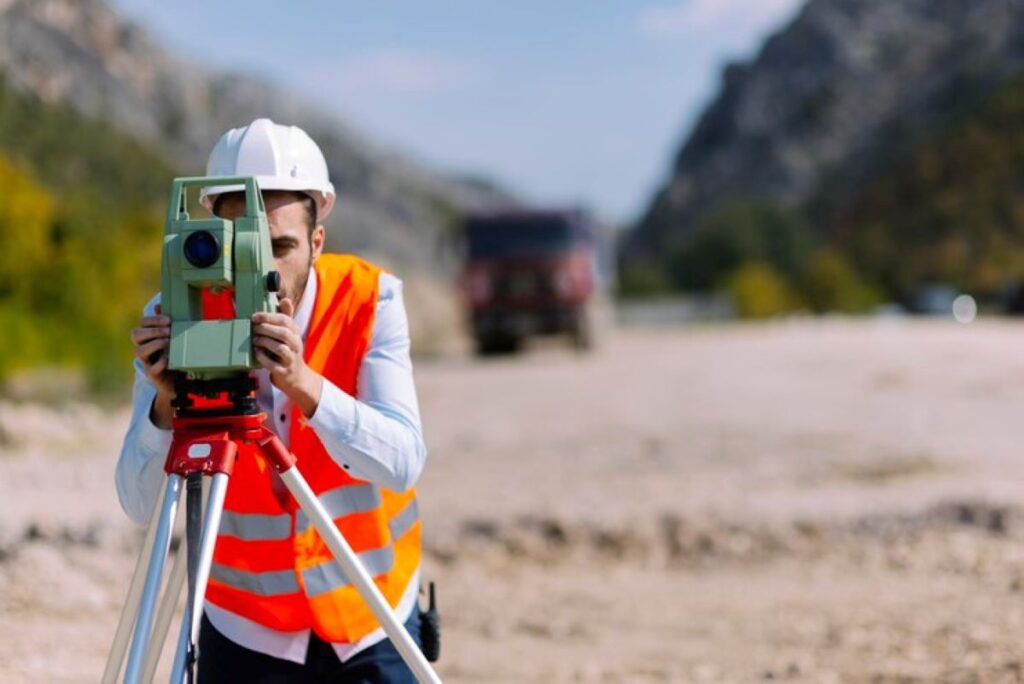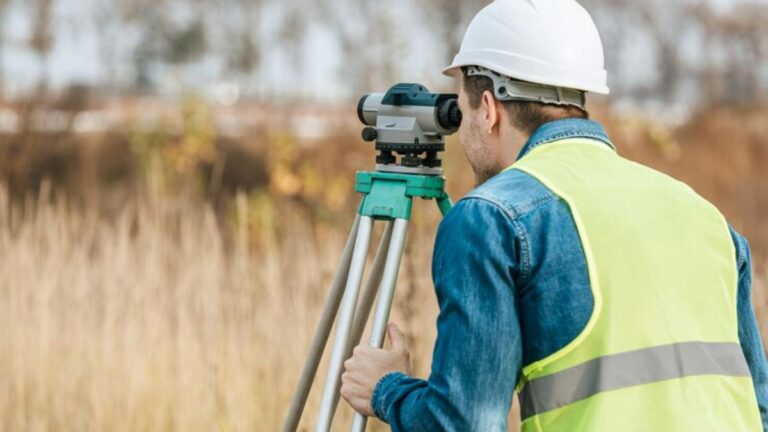Contour and detail surveys are essential tools in the field of land surveying, providing critical information for various applications such as construction, land development, and environmental management. These surveys offer a detailed representation of the land’s topography and features, allowing professionals to make informed decisions. This article delves into the intricacies of contour and detail surveys, exploring the methodologies, technologies, and applications that underpin this vital process.
Understanding Contour Surveys
Contour surveys focus on mapping the elevation of land by creating contour lines. These lines connect points of equal elevation, providing a visual representation of the terrain’s shape and slope. Understanding the principles behind contour surveys is crucial for various industries, including civil engineering, architecture, and environmental science.
The Importance of Elevation Data
Elevation data is fundamental in contour surveys, as it influences water drainage, soil erosion, and vegetation growth. Accurate elevation information allows planners and engineers to assess the suitability of land for specific projects. For example, in construction, understanding the slope of the land can help determine the type of foundation required and the potential for flooding.
Moreover, elevation data aids in environmental assessments, helping to identify areas prone to erosion or habitat loss. By mapping these features, stakeholders can develop strategies to mitigate negative impacts on the environment. This data is also invaluable for agricultural planning, as farmers can use contour surveys to optimise irrigation systems and enhance crop yields by understanding how water moves across their fields.
Contour Line Interpretation
Contour lines are drawn at regular intervals, representing changes in elevation. The spacing between these lines indicates the steepness of the terrain; closely spaced lines suggest a steep slope, while widely spaced lines indicate a gentle slope. Understanding how to interpret these lines is vital for professionals working with topographical data. Visit https://www.landgate.wa.gov.au/location-data-and-services/maps/topographic-maps/ to get about topographical maps.
For instance, when planning a road or a building, engineers must consider the slope of the land to ensure safety and functionality. A steep slope may require additional engineering solutions, such as retaining walls or drainage systems, to prevent erosion and manage water runoff effectively. Furthermore, contour surveys can play a significant role in recreational planning, such as the design of hiking trails or ski resorts, where the natural contours of the land can enhance user experience while ensuring safety and sustainability.
The Detail Survey Process
Detail surveys complement contour surveys by providing a comprehensive overview of the land’s features, including buildings, roads, vegetation, and other significant elements. This process involves meticulous data collection and analysis, ensuring that all relevant details are captured accurately.
Data Collection Techniques
The data collection phase of a detail survey employs various techniques, including traditional surveying methods and advanced technologies. Total stations, GPS, and laser scanning are commonly used tools that enhance the accuracy and efficiency of data gathering.
Traditional methods, such as the use of theodolites and measuring tapes, are still relevant, particularly for smaller projects or in areas where technology may not be feasible. However, modern techniques such as GPS and laser scanning have revolutionised the surveying industry, allowing for rapid and precise data collection over large areas. In addition, the integration of drones into the surveying process has emerged as a game-changer, enabling surveyors to capture aerial imagery and topographical data from hard-to-reach locations, thereby enhancing the overall scope and detail of the survey.
Data Processing and Analysis
Once the data is collected, it undergoes a rigorous processing and analysis phase. This involves converting raw data into usable formats, typically through software that can create detailed maps and models. Geographic Information Systems (GIS) play a crucial role in this stage, enabling surveyors to visualise and manipulate spatial data effectively.
During this phase, surveyors can identify patterns, assess land use, and generate reports that detail the findings of the survey. This information is invaluable for stakeholders, providing insights that can influence design decisions and project planning. Furthermore, the ability to layer different data sets within GIS allows for a more nuanced understanding of the land’s characteristics, such as hydrology, soil types, and existing infrastructure, which can be critical for environmental assessments and urban planning. The collaborative nature of this process often involves engaging with local authorities and community stakeholders, ensuring that the data collected serves not only the immediate project needs but also aligns with broader regional development goals.

Technological Advancements in Surveying
The surveying industry has seen significant advancements in technology, which have transformed the way contour and detail survey are conducted. These innovations enhance accuracy, efficiency, and the overall quality of survey data.
Use of Drones in Surveys
Drones have emerged as a powerful tool in the surveying toolkit, allowing for aerial surveys that capture detailed images and data from above. Equipped with high-resolution cameras and sensors, drones can cover large areas quickly, providing a bird’s-eye view of the terrain.
The use of drones not only speeds up the data collection process but also improves safety by reducing the need for surveyors to traverse potentially hazardous terrain. The data collected can be processed using photogrammetry software to create 3D models and contour maps, offering a comprehensive view of the land.
Integration of 3D Modelling
3D modelling has become an integral part of modern surveying, allowing for a more immersive representation of the surveyed area. By integrating contour and detail survey data into 3D models, professionals can visualise the land in a way that traditional 2D maps cannot provide.
This technology aids in project planning and design, enabling stakeholders to assess the impact of proposed developments on the surrounding environment. Additionally, 3D models can be used for simulations, helping to predict how changes to the land will affect drainage, erosion, and other critical factors.
Applications of Contour and Detail Surveys
The applications of contour and detail surveys are vast, spanning various industries and sectors. Understanding these applications is essential for recognising the value of these surveys in real-world scenarios.
Urban Planning and Development
In urban planning, contour and detail surveys provide essential data for designing infrastructure, such as roads, bridges, and buildings. Accurate topographical information helps planners assess land suitability and make informed decisions about zoning and land use.
Moreover, these surveys are crucial for environmental impact assessments, ensuring that developments comply with regulations and minimise harm to the surrounding ecosystem. By understanding the land’s contours and features, planners can develop strategies that promote sustainable development.
Environmental Management
Contour and detail surveys play a vital role in environmental management, aiding in the conservation of natural resources and habitats. By mapping land features, surveyors can identify areas that require protection or restoration, such as wetlands, forests, and wildlife habitats.
Additionally, these surveys assist in monitoring changes to the landscape over time, providing valuable data for assessing the impact of climate change, urbanisation, and other human activities. This information is crucial for developing effective management strategies that support biodiversity and ecosystem health. Click here to get more about choosing the best surveying companies in Sydney for your project.
Challenges in Contour and Detail Surveys
While contour and detail surveys are invaluable, they are not without challenges. Surveyors must navigate various obstacles to ensure the accuracy and reliability of their data.
Terrain and Accessibility Issues
One of the primary challenges in conducting contour and detail surveys is navigating difficult terrain. Steep slopes, dense vegetation, and remote locations can hinder data collection efforts, requiring surveyors to employ specialised techniques and equipment.
In some cases, access to certain areas may be restricted due to private property or environmental regulations. Surveyors must work closely with landowners and regulatory bodies to obtain the necessary permissions and ensure compliance with local laws.

Data Accuracy and Reliability
Ensuring data accuracy is paramount in surveying, as even minor errors can lead to significant consequences in project planning and execution. Surveyors must employ rigorous quality control measures throughout the data collection and processing phases to minimise the risk of inaccuracies.
Additionally, the reliance on technology introduces potential challenges, such as equipment malfunctions or software errors. Surveyors must remain vigilant and prepared to troubleshoot issues as they arise, ensuring that the integrity of the survey data is maintained.
Conclusion
Contour and detail surveys are essential components of land surveying, providing critical information for various applications across multiple industries. Understanding the processes, technologies, and challenges involved in these surveys is vital for professionals working in fields such as construction, urban planning, and environmental management.
As technology continues to advance, the surveying industry will undoubtedly evolve, offering new tools and methodologies that enhance the accuracy and efficiency of contour and detail surveys. By embracing these innovations and addressing the challenges that arise, surveyors can continue to provide invaluable insights that contribute to sustainable development and effective land management.
